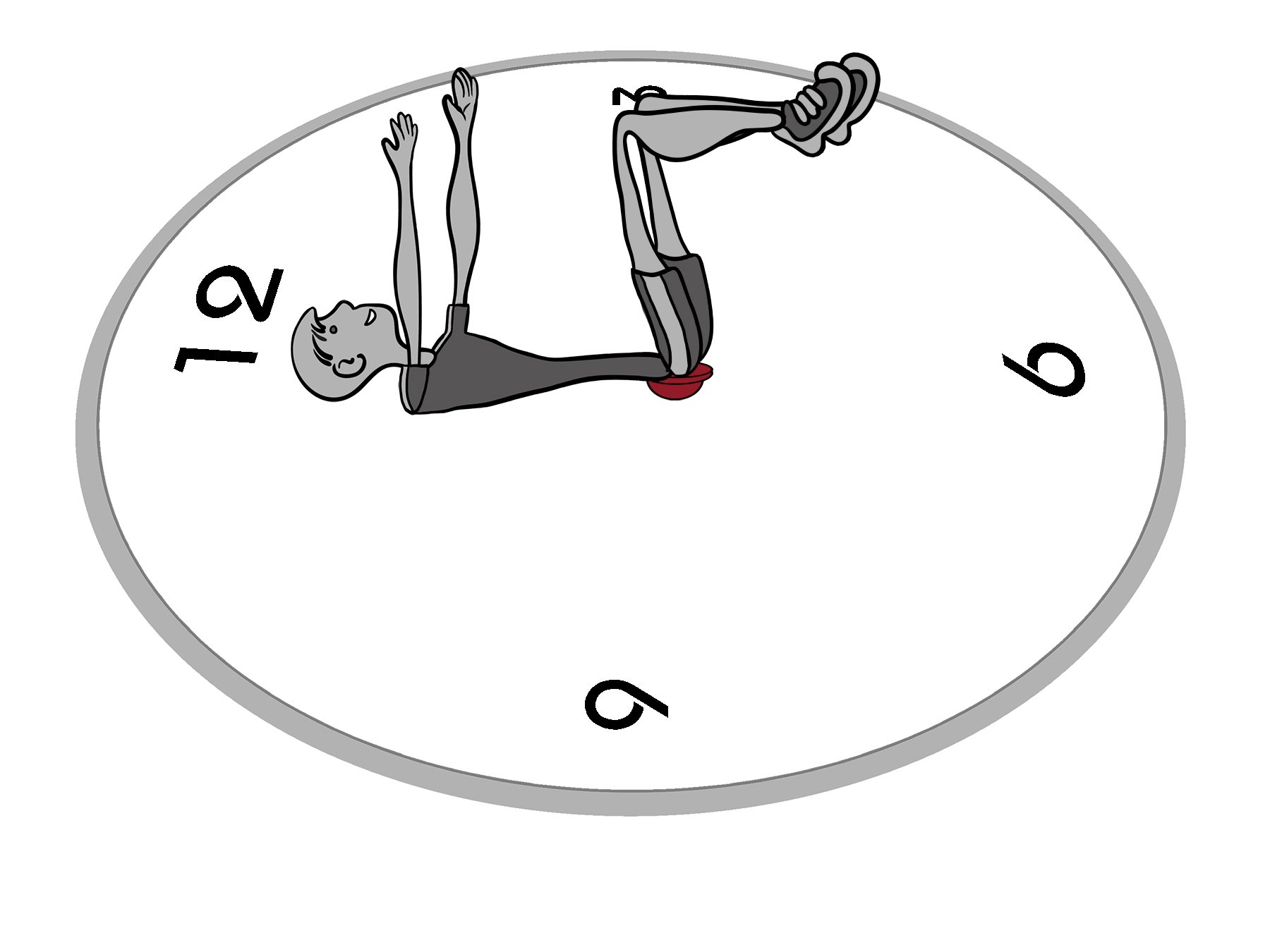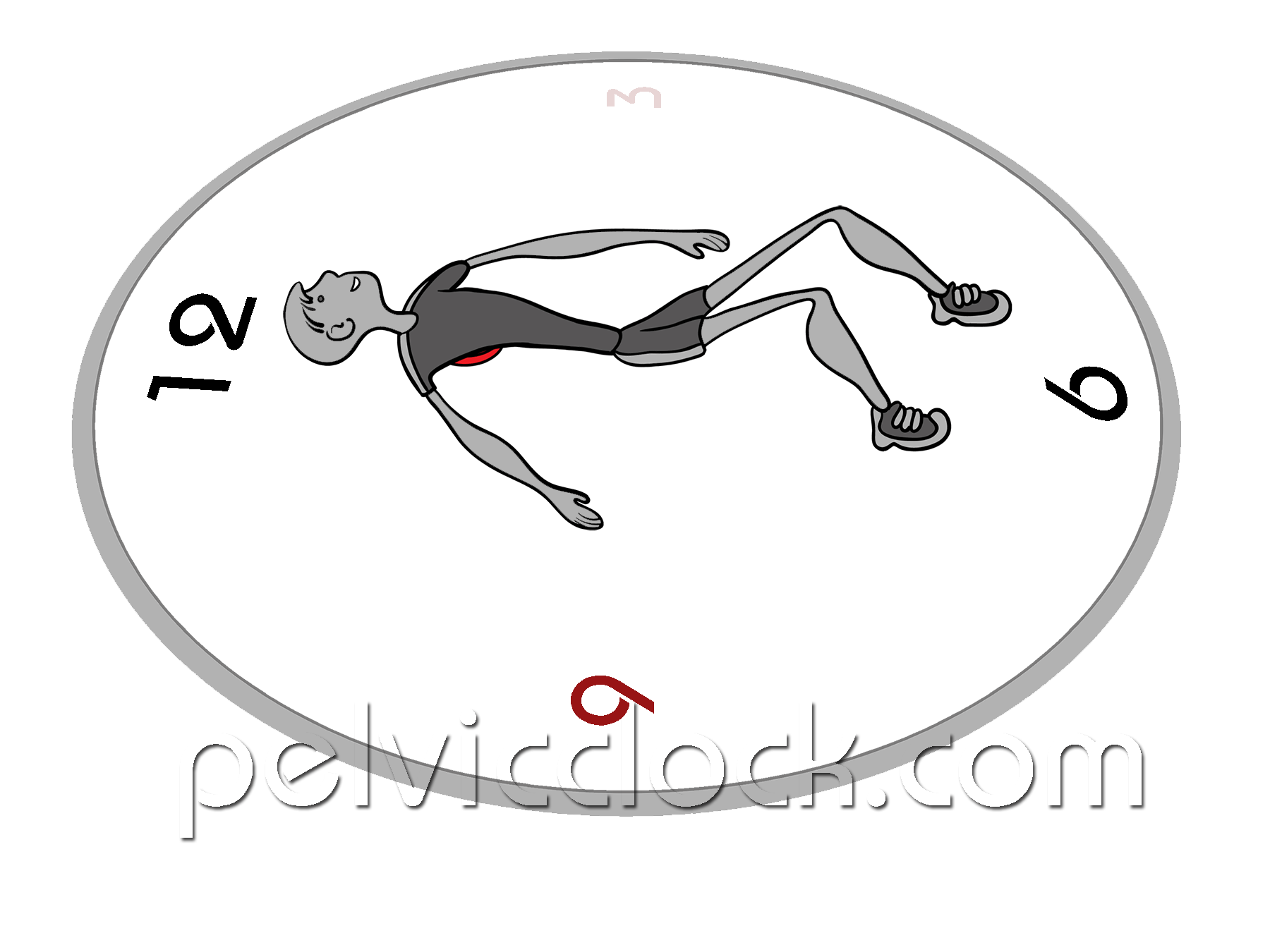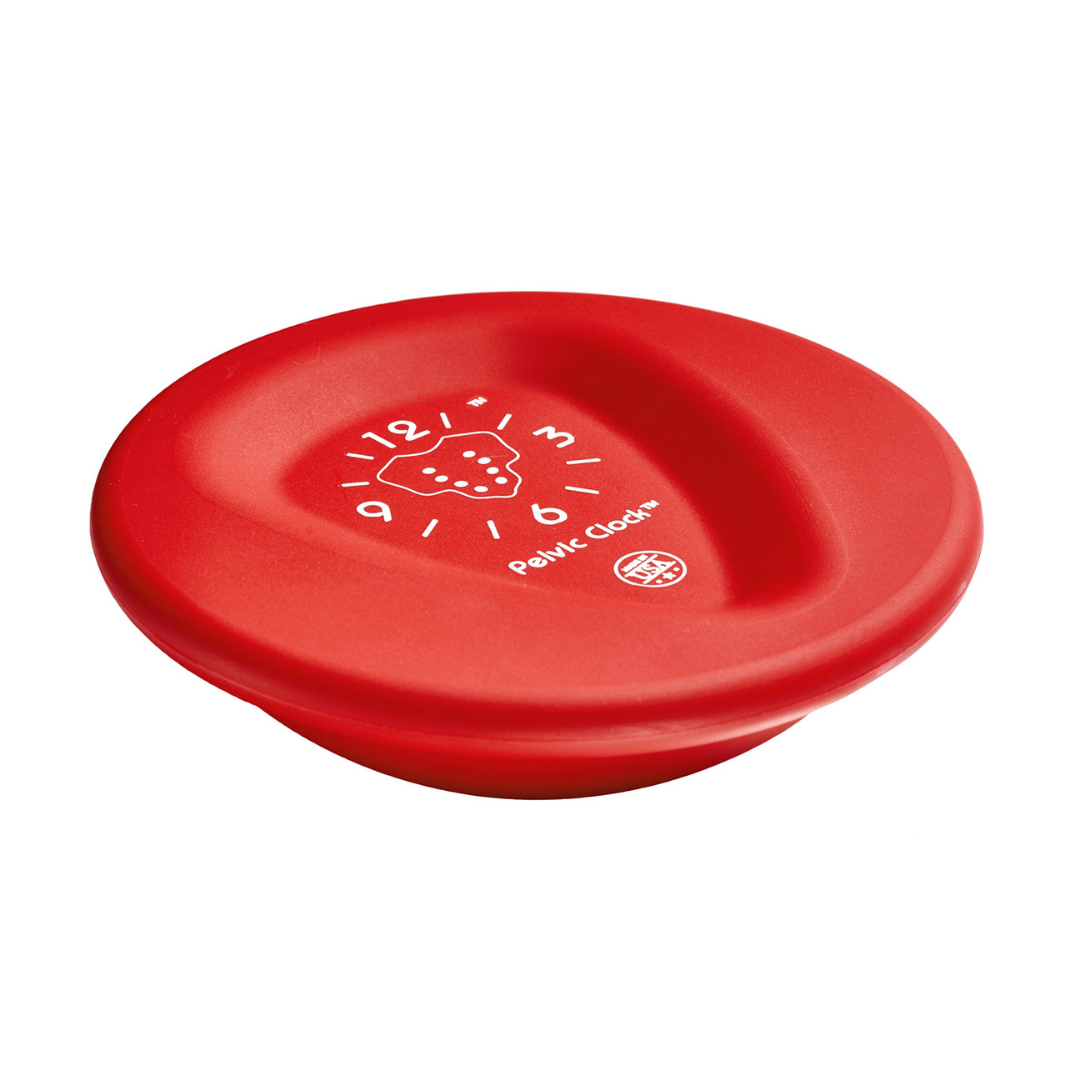Pelvic Clock® Exercises for Swayback Posture Correction
Igor Gershengorin
By Yana Blinova, MS, Inventor of Pelvic Clock® Exercise Device, Former Olympic Coach.
Swayback posture, also called "lazy posture", often leads to lower back and neck pain and, later in life, a loss of balance.
How to Identify Swayback Posture
When compared to a healthy and neutral posture, swayback posture can be identified by the following signs:
Pelvis & Lower Back
Posterior Pelvic Tilt – The pelvis is tucked or tilted backward.
Loss of Lumbar Lordosis – A decrease in the natural curve of the lower back.
Weak core muscles and weak hip flexors allow the pelvis to shift forward in relation to the ankles.
Note: Do not mistake a forward-shifted pelvis for a forward-tilted pelvis. Anterior Pelvic Tilt has nothing to do with swayback posture.
In some cases, swayback posture is aggravated by "hanging on one hip", where one leg bears most of the body weight while standing. A weak gluteus medius allows the pelvis to tilt laterally, leading to a Lateral Pelvic Tilt.
Upper Body
Thoracic Kyphosis (Rounded Back) – An increased curvature in the upper back.
Forward Head Posture – The head is positioned ahead of the shoulders.
Ribcage Shifted Backward – The shoulders are positioned behind the hips, making balancing increasingly challenging.
Legs
Tight hamstrings.
Hyperextended knees locked in a backward position.
Correcting Swayback Posture
Recognizing these signs can help you take steps to improve posture, reduce discomfort, and lower the risk of falling.
A corrective exercise program for swayback posture is a complex, long-term process that should address all the issues mentioned above.
The goal is to find your own neutral pelvis and neutral spine positions, while building strong core muscles to support a healthy and balanced posture.
The truth is that regular corrective exercises are the only solution for postural dysfunctions and one must work hard to prevent the premature decline of our bodies. There is no easy or quick fix, but with regular exercises and stretches, it can be achieved.
How Does the Pelvic Clock® Help Correct Swayback Posture?
The Pelvic Clock® is a portable exercise device that makes corrective exercises more effective.
The Pelvic Clock® workout can be incorporated into any swayback posture correction program to address the following:
Neutral Pelvis & Neutral Spine
A neutral pelvis means your pelvis is not tilted or rotated in any direction—forward, backward, or sideways.
How to Find a Neutral Pelvis Using the Pelvic Clock®:
Lie on your back with your knees bent, feet hip-width apart, and flat on the floor.
Place the Pelvic Clock® under your sacrum, round side down, with the 12 o’clock marker facing your head.
Keep the flat surface of the device parallel to the floor.
Take five deep breaths while maintaining this neutral position.
A neutral pelvis is the foundation for a neutral spine, where all three natural curves of the spine—lumbar lordosis, cervical lordosis, and thoracic kyphosis—are properly aligned in a healthy posture.
Posterior Pelvic Tilt
A posterior pelvic tilt reduces lumbar lordosis and weakens the glutes. The Pelvic Clock® workout helps restore a neutral pelvis by:
✔ Strengthening weak back muscles.
✔ Increasing lumbar lordosis.
Exercise: "6-HOLD"
Inhale and tilt your pelvis forward toward the 6 o’clock marker. Hold for five seconds.
Exhale and tilt your pelvis back toward your head.
Repeat 10 times.
Thoracic Kyphosis
Thoracic kyphosis extends the upper back's curve into the lower spine, causing stiffness and pain. The Pelvic Clock® helps restore thoracic mobility:
Place the flat surface of the device between your shoulder blades, with the round side on the ground. Relax your body by taking deep slow breaths.
Without moving the rest of your body, slowly rotate your ribcage to the left, then to the right.
Repeat 10–20 times.
Core Stability Exercises
Pelvic Clock® core stability exercises activate deep core muscles, including the internal and external obliques and transversus abdominis, which are essential for maintaining a neutral pelvis and spine.



Download a Free PDF Exercise Guide for
Swayback Posture Correction
To address swayback posture-related problems, download a free set of Pelvic Clock® instructions below.










